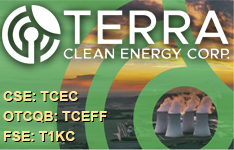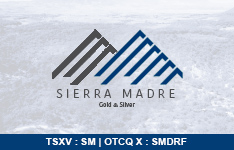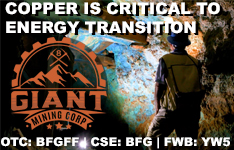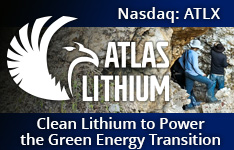West Point Gold Corp. (WPG:TSXV; WPGCF:OTCQB) has released assay results from two additional reverse circulation drill holes at its Tyro Main Zone, part of the Gold Chain Project in Arizona. The company reported that drill holes GC25-57 and GC25-58 extended the high-grade zone at the northeast end of Tyro to a total strike length of approximately 190 meters. This is a notable increase from the previously defined 100-meter extent.
Hole GC25-58 returned 32.0 meters of 2.01 grams per tonne (g/t) gold, including 1.5 meters of 26.7 g/t gold. This intercept is located roughly 90 meters north of hole GC25-49, which previously returned 62.5 meters of 4.73 g/t gold. Hole GC25-57, positioned approximately 50 meters northeast of GC25-49, intersected 13.8 meters of 3.16 g/t gold, including 7.6 meters of 4.31 g/t gold.
According to the company, both holes were drilled to test the lateral and vertical extent of a recently defined high-grade shoot within the Tyro Main Zone. "These results expand the width of the recently defined high-grade zone at northeast Tyro to 190 meters," said Quentin Mai, CEO of West Point Gold, in a company news release. "Grades at northeast Tyro appear to be improving at depth."
The company noted that mineralization in the northeast Tyro segment remains open at depth and toward the Frisco Graben, a structural target approximately 400 meters to the northeast. Ten additional holes totaling approximately 2,458 meters have been completed, with assay results pending.
West Point Gold also confirmed that its Vice President of Exploration, Robert Johansing, is the Qualified Person under National Instrument 43-101 who reviewed and approved the technical content of the release. Assay procedures were carried out by American Assay Laboratories using fire assay with ICP and gravimetric finishes.
Gold as a Strategic Asset in an Unstable Financial Landscape
The gold sector remained a focal point of both financial resilience and global uncertainty in recent months. Several key developments highlighted the metal's enduring role as a safe haven, a trading opportunity, and a geopolitical hedge.
According to Brian Hicks, writing on June 12, gold mining continues to extract a steep toll in terms of energy and human resources. He pointed to South Africa's Mponeng mine, which consumes nearly 10% of the country's power output while delivering just 10 tons of gold per year. Hicks stated, "Gold will always have value," but emphasized that its extraction has reached unsustainable extremes. He described gold as "trust," "memory," and "currency," reinforcing the view that, despite operational and environmental costs, demand for gold remains underpinned by its intrinsic historical and financial importance.
On June 13, the Stockhead news outlet reported a significant spike in gold prices, which briefly touched US$3410 per ounce following reports of Israeli airstrikes on Iran. This surge highlighted gold's role as a geopolitical hedge. The news triggered broad market volatility, yet gold gained in response to increased investor demand for safe-haven assets amid the rising threat of conflict in the Middle East.
In a related commentary on the same day, investor Chen Lin noted that the sharp gold rally prompted him to exit his positions. He remarked, "I don't like the geopolitical induced price jump," citing concerns over the unpredictability of market movements during crises. His perspective echoed the heightened sensitivity of the gold market to sudden geopolitical developments.
In the same week, another dynamic emerged on the institutional side. A June 13 article by VBL revealed that U.S. bullion banks posted US$500 million in precious metals trading revenue during Q1 2025. The performance was largely driven by arbitrage trades as COMEX gold prices traded at a premium to global benchmarks. The article explained that fears over potential tariffs led to increased physical gold shipments to the U.S., replicating conditions last seen in 2020. This episode reaffirmed the enduring value of gold as both a commodity and a trading instrument during periods of policy and trade-related uncertainty.
A deeper structural analysis came on June 16 from Matthew Piepenburg, who framed gold as the ultimate "lie detector" of a broken financial system. He stated, "Gold is unmasking the lie of deficits without tears, money printing without currency debasement and debt without destruction." Piepenburg cited record demand for physical gold, including more than 2,000 tons moved from London to New York, and warned of derivative exposure exceeding US$1 trillion. According to him, this reflected eroding confidence in fiat currencies and a growing shift toward tangible assets as central banks around the world increase their gold holdings.
Forward Momentum at Tyro and Beyond
West Point Gold's current exploration strategy is centered on advancing its maiden resource at the Gold Chain Project, where the Tyro Main Zone is the primary focus. According to the company's June 2025 investor presentation, the Tyro zone represents a low-sulphidation epithermal gold system with a strike length of approximately 1.4 kilometers. Exploration to date has defined mineralization across 800 meters and has identified multiple high-priority targets.
The company has stated its intent to continue drilling northeast toward the Frisco Graben, an area characterized by a 4 kilometer by 750 meter target bounded by the Frisco Mine Fault and Union Pass Fault. The recent drilling supports the hypothesis that the mineralized zone at Tyro extends in that direction despite limited surface exposure.
Looking ahead, West Point Gold expects to release results from additional drill holes and metallurgical testing in the second quarter of 2025. The company is also advancing parallel efforts at its Jefferson Canyon project in Nevada through an option agreement with Kinross, which includes staged payments and work commitments totaling US$10 million.
The company's capital structure as of June 10, 2025, included 87.8 million shares issued and outstanding, with no debt and approximately CA$9.2 million in cash on hand. The company's focus remains on aggressive exploration, with multiple drill-ready targets across its 9,840-acre Gold Chain property.
Analyst Sees Bullish Breakout Momentum for West Point Gold
In a February 18 report, Technical Analyst Clive Maund identified a strong bullish setup for West Point Gold Corp., stating the outlook had appeared "entirely positive" as early as January. He noted the company’s shares had "broken out of the rectangular trading range" and were climbing "on persistent strong upside volume."
 Streetwise Ownership Overview*
Streetwise Ownership Overview*
West Point Gold Corp. (WPG:TSXV; WPGCF:OTCQB)
While he acknowledged the stock was "substantially overbought on a short-term basis" and could consolidate, Maund emphasized that the overall "price / volume action is very bullish indeed," signaling continued momentum in what he called "this still young bull market."
Looking at the long-term chart, Maund stated the company appeared to be "building up to breaking out of a large base pattern" formed since spring 2022. He suggested that a confirmed breakout could lead to a sharper acceleration in share price, citing targets of CA$0.50 (later reached), CA$0.76, and a projected range between CA$1.28 and CA$1.35.
Ownership and Share Structure
According to Refinitiv, about 8% of West Point Gold is owned by insiders and management, and about 1% by institutions. The rest is retail.
Top shareholders include Executive Chairman Derek Macpherson with 3.01%, Gary Thompson with 2.39%, Chief Financial Officer John McNeice with 0.49%, U.S. Global Investors Inc. with 1.29%, and Director Anthony Paterson with 1.51%.
Its market cap is CA$28.98 million with 65.86 million shares outstanding, and it trades in a 52-week range of CA$0.15 and CA$0.52.
| Want to be the first to know about interesting Gold investment ideas? Sign up to receive the FREE Streetwise Reports' newsletter. | Subscribe |
Important Disclosures:
- As of the date of this article, officers and/or employees of Streetwise Reports LLC (including members of their household) own securities of West Point Gold
- James Guttman wrote this article for Streetwise Reports LLC and provides services to Streetwise Reports as an employee.
- This article does not constitute investment advice and is not a solicitation for any investment. Streetwise Reports does not render general or specific investment advice and the information on Streetwise Reports should not be considered a recommendation to buy or sell any security. Each reader is encouraged to consult with his or her personal financial adviser and perform their own comprehensive investment research. By opening this page, each reader accepts and agrees to Streetwise Reports' terms of use and full legal disclaimer. Streetwise Reports does not endorse or recommend the business, products, services or securities of any company.
For additional disclosures, please click here.





































